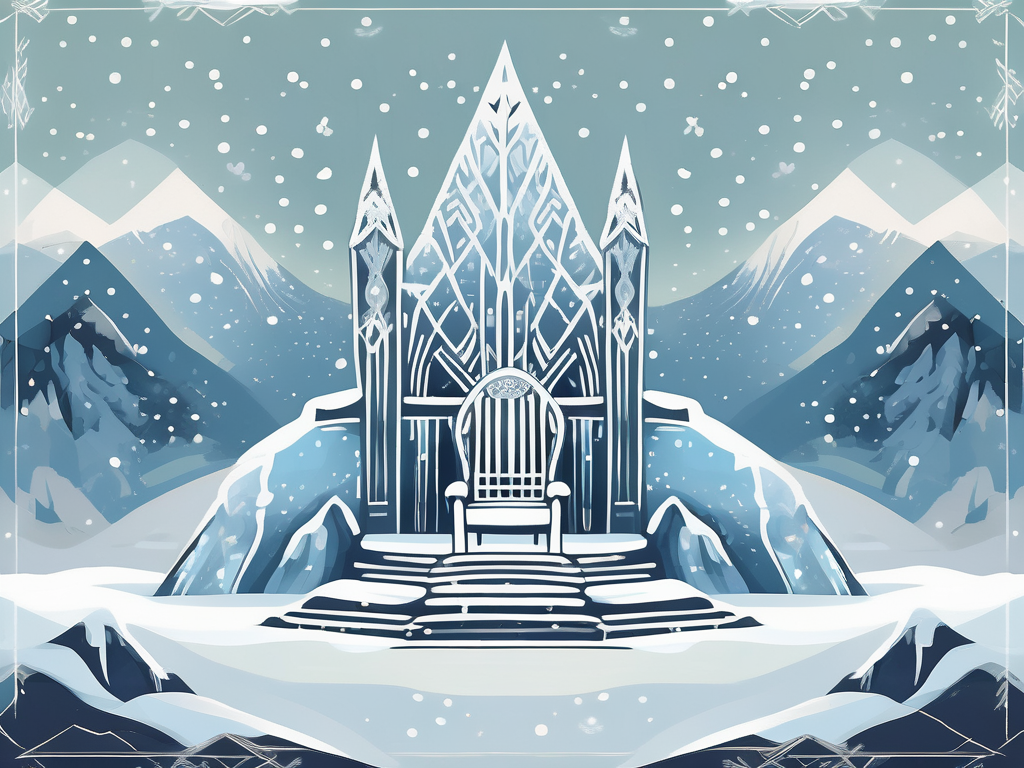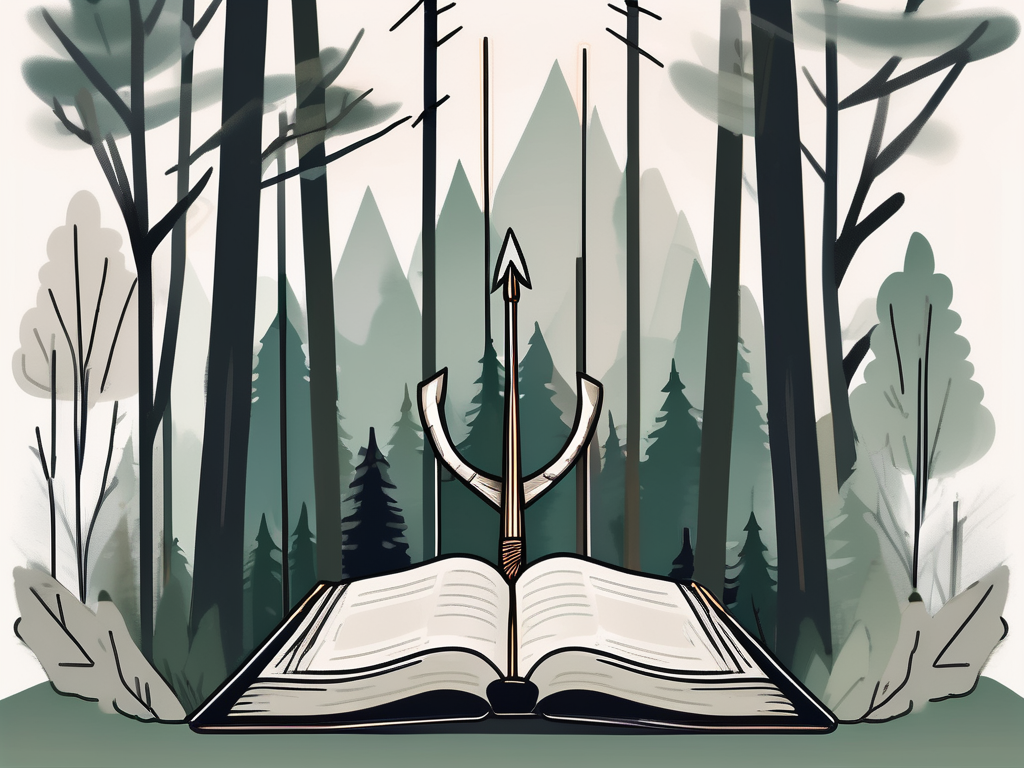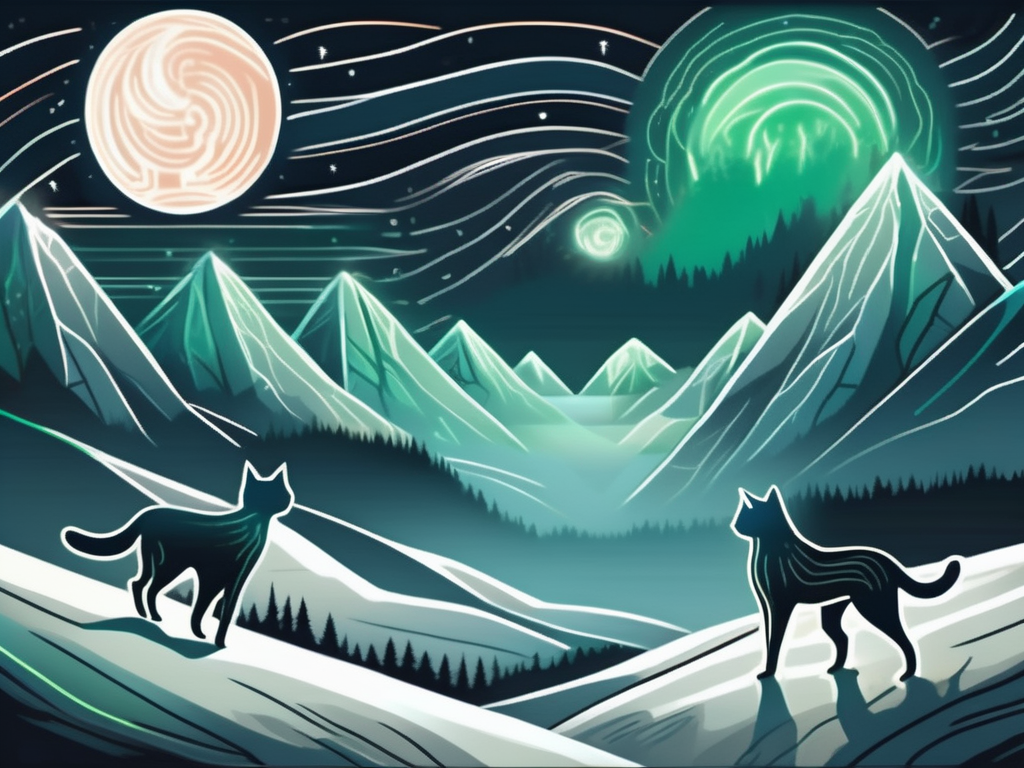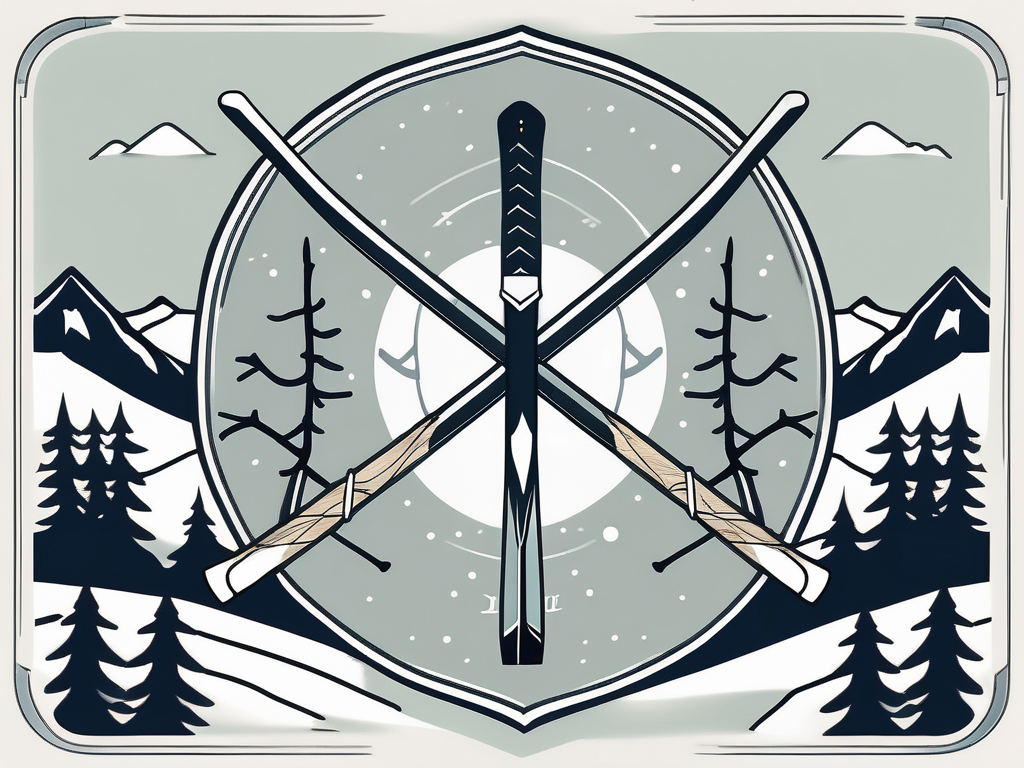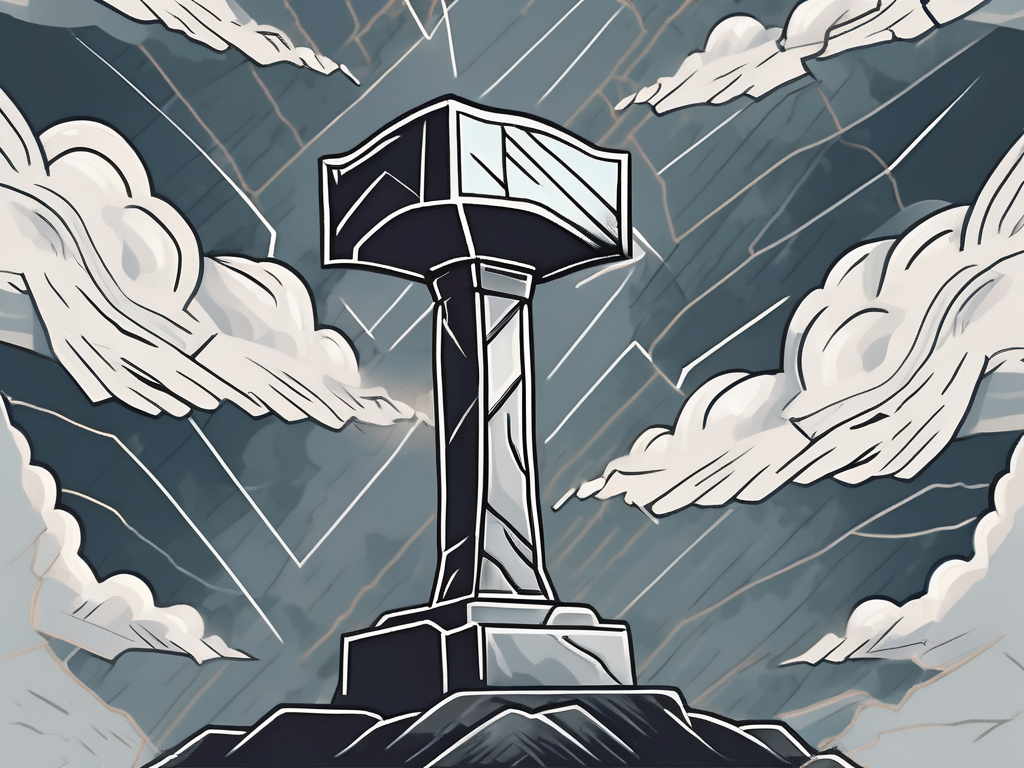One of the intriguing figures in Norse mythology is Skadi, the goddess of winter and hunting. In order to understand Skadi’s significance, it is important to first gain an understanding of the Norse pantheon as a whole.
Understanding the Norse Pantheon
The Norse pantheon is rich with diverse gods and goddesses, each with their own unique roles and responsibilities. In Norse culture, gods played an integral part in people’s lives, serving as both protectors and providers. As a result, they were highly revered and honored through rituals and offerings.
The Norse pantheon consisted of numerous gods and goddesses, each with their own distinct personalities and domains of influence. Odin, the Allfather, was the chief deity and ruled over Asgard, the realm of the gods. He was associated with wisdom, magic, and war. Thor, the mighty god of thunder, was known for his strength and bravery, and was often called upon for protection against enemies and storms.
The gods in Norse mythology were believed to have control over different aspects of life, such as warfare, fertility, and natural phenomena like storms and seasons. They were often seen as guides and protectors, offering their blessings to those who adhered to their traditions and sought their favor.
The Role of Gods in Norse Culture
The gods played a vital role in Norse culture, influencing various aspects of daily life. They were not only worshipped in grand temples and sacred spaces but were also present in the smallest details of everyday existence. People would offer prayers and sacrifices to the gods before embarking on journeys, going into battle, or even starting a new farming season.
One of the most important roles of the gods was to ensure the prosperity and well-being of the community. For example, Freyr, the god of fertility, was invoked during planting and harvesting seasons to ensure bountiful crops. Frigg, the goddess of marriage and motherhood, was called upon for blessings in matters of love and family.
Furthermore, the gods were believed to have a direct influence on the outcome of battles. Warriors would pray to Odin for strength and courage before going into combat, seeking his favor to ensure victory. Similarly, sailors would invoke the protection of Njord, the god of the sea, to ensure safe voyages and successful fishing trips.
The Importance of Nature Deities
Among the many deities worshipped in Norse mythology, the nature deities held a special place. They were regarded as the guardians of the natural world and were associated with various elements, such as the sun, moon, mountains, and forests. Skadi, as the goddess of winter and hunting, was one such nature deity.
Skadi was often depicted as a fierce huntress, roaming the snowy mountains with her bow and arrows. She was revered by hunters who sought her guidance and blessings for a successful hunt. In addition to her association with winter and hunting, Skadi was also known as a skilled skier, embodying the spirit of endurance and resilience in the face of harsh conditions.
Other nature deities included Freyja, the goddess of love and beauty, who was associated with fertility and abundance. She was often depicted surrounded by flowers and was revered by those seeking love and romantic relationships. Freyja was also known for her connection to the mystical realm of the Vanir, a group of gods associated with fertility, magic, and prosperity.
Overall, the Norse pantheon was a complex and intricate system of gods and goddesses, each with their own stories and significance. They played a central role in the lives of the Norse people, providing guidance, protection, and blessings in various aspects of life. From the mighty Odin to the nature deities like Skadi, the Norse gods continue to captivate our imagination and remind us of the rich mythology and culture of the ancient Norse civilization.
Skadi: An Introduction
Skadi, also known as Skaði or Skade, is a prominent figure in Norse mythology. She was the daughter of the giant Thjazi and was believed to be immensely strong and skilled in hunting. Skadi’s name is derived from the Old Norse word “skadi,” meaning “harm” or “damage,” which highlights her association with harsh winter conditions.
In addition to her prowess in hunting, Skadi was also known for her beauty and grace. Her striking appearance captivated the gods and mortals alike, making her a figure of admiration and desire. Her piercing blue eyes were said to hold the power to freeze even the warmest of hearts, symbolizing her connection to the icy landscapes she ruled over.
The Origins of Skadi
Skadi’s story begins with her father, Thjazi, who was slain by the gods for his role in stealing the golden apples of immortality. Seeking to avenge her father’s death, Skadi embarked on a journey to Asgard, the realm of the gods, to confront them. Her determination and unwavering spirit impressed the gods, who recognized her as a force to be reckoned with.
During her time in Asgard, Skadi encountered Loki, the mischievous trickster god. Loki, always quick to seize an opportunity, saw potential in Skadi and proposed a deal. He promised to help her exact revenge on the gods if she agreed to marry one of them. Intrigued by the offer, Skadi agreed, setting in motion a series of events that would shape her destiny.
Skadi’s Place Among the Norse Gods
Skadi’s marriage to the sea god Njord marked her integration into the pantheon of Norse gods. The union was seen as a symbol of unity between the land and sea, as Skadi represented the mountains and winter while Njord embodied the vastness of the ocean. However, due to their differing natures and lifestyles, the marriage was ultimately unsuccessful and resulted in their separation.
Despite the dissolution of her marriage, Skadi continued to play a significant role in Norse mythology. She was revered as the goddess of winter, known for her ability to bring forth snowstorms and freezing winds. Her presence was both feared and respected, as she held the power to shape the harsh winter conditions that tested the resilience of both gods and mortals.
Skadi’s story serves as a reminder of the complex dynamics within the Norse pantheon and the ever-present struggle between different forces of nature. Her strength, determination, and connection to the unforgiving winter landscapes make her a symbol of endurance and resilience in the face of adversity.
Skadi’s Association with Winter
Winter held great symbolism in Norse mythology, with the cold and harsh conditions representing both challenge and renewal. Skadi’s role as the goddess of winter highlights her power and influence over this season, making her an essential figure in Norse folklore.
The Symbolism of Winter in Norse Mythology
In Norse mythology, winter was seen as a time of introspection and preparation for the coming spring. The long, dark nights were believed to be a time when the gods rejuvenated themselves, ready to bring new life and growth once winter subsided. Skadi’s connection to winter embodied these ideas of resilience and transformation.
Skadi’s Powers and Influence over Winter
Skadi was believed to have control over the elements that defined winter. She could summon fierce blizzards and freezing temperatures, bringing both the beauty and harshness of the season. People invoked her powers during winter rituals, seeking her blessings for protection and survival in the midst of the cold.
Skadi: The Huntress of the Gods
Aside from her association with winter, Skadi was also revered as a skilled huntress. In Norse culture, hunting played a vital role in providing sustenance and resources, and Skadi’s prowess in this area made her a respected figure among both gods and mortals.
Hunting in Norse Culture and Mythology
Hunting was an integral part of Norse culture, not only as a means of survival but also as a way to assert dominance over nature. The successful hunt represented the harmony between gods, humans, and the natural world. Skadi’s expertise in hunting showcased her ability to navigate the treacherous realms of the wilderness.
Skadi’s Hunting Abilities and Attributes
Skadi possessed exceptional tracking skills and unmatched agility, making her a formidable hunter. She was often depicted with her trusty bow and arrows, ready to embark on daring hunts alongside the gods. Skadi’s hunting abilities served as a testament to her strength and self-reliance, qualities highly valued in Norse society.
Skadi’s Notable Myths and Legends
Throughout Norse mythology, Skadi’s compelling story was woven into various tales and legends, showcasing her complex relationships and influencing significant events.
Skadi’s Marriage to Njord
Skadi’s marriage to Njord, the sea god, is a tale of contrasts and clashes. The union between the goddess of winter and the god of the sea represented the meeting of opposing forces. However, their differences proved insurmountable, ultimately leading to their separation and the exploration of their individual spheres of influence.
Skadi’s Role in the Death of Loki
Skadi’s involvement in the death of Loki, the trickster god, is another prominent myth associated with her. Seeking vengeance for the role Loki played in her father’s demise, Skadi played a pivotal role in capturing him. This act demonstrated Skadi’s determination and showcased the consequences of defying a powerful deity.
In conclusion, Skadi, the Norse goddess of winter and hunting, played a crucial role in the Norse belief system. Her association with winter, hunting prowess, and participation in intriguing myths make her an intriguing and influential figure among the Norse pantheon. Understanding the significance of Skadi provides deeper insights into the rich and complex world of Norse mythology.

